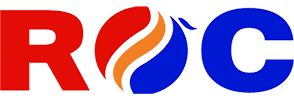Plywood is a kind of man-made wood board that is reassembled by peeling.
Plywood is made by cutting into large-area veneers in the direction of annual rings. After drying and bonding, it is produced according to the standard of the vertical mahogany grain orientation of adjacent veneers.
The number of core boards is generally an odd number of layers, usually three to thirteen layers, and the common number of layers is generally three layers, five layers, nine layers, and 13 layers (the sales market is generally called three plywood, five plywood, nine plywood, Thirteen centimetres). The front veneer of the outermost layer is called the front panel, the back is called the back panel, and the inner layer is called the core board.
Type 1 plywood has the advantages of weather resistance, boiling water resistance, durability, high temperature resistance, and steam resistance.
These 2 types of plywood are waterproof plywood, which can be soaked in cold water and hot water in a short time.
Type 3 plywood is waterproof plywood, which can be immersed in cold water for a short period of time, which is suitable for the indoor temperature in the room. Furniture and general construction purposes;
Type 4 plywood is moisture-resistant plywood, which is commonly used indoors. Commonly used plywood includes birch, eucalyptus, and poplar.
Plywood is mainly used in outdoor conditions, such as building exterior decoration and concrete formwork. In decoration, it is mainly used in ceilings, wall skirts, and floor liners.
The basic composition of plywood
In order to improve the anisotropy of natural wood as much as possible, plywood has uniform characteristics and stable shape. Generally, plywood must follow two basic principles in structure: one is symmetrical; the other is that adjacent single-board optical fibers are perpendicular to each other.
The principle of symmetry is that plywood is required on both sides of the center plane of symmetry of the plywood, regardless of the nature of the wood, the thickness of the plywood, the number of layers, the direction of the fiber, and the humidity content should be symmetrical to each other.
In the same plywood, single trees and veneers of thickness can be used, or veneers of different tree species and thicknesses can be used; however, any two layers of mutually symmetrical veneer trees and thicknesses on both sides of the symmetry center plane are the same.
In order to make the structure of the plywood meet the above two basic principles, the number of layers should be odd.
Therefore, plywood is usually divided into three layers, five layers, seven layers and other odd layers.
The name of the plywood layer is: the surface veneer is called the table, the inner veneer is called the core board; the front panel is called the panel, and the rear panel is called the rear panel; in the core board, the fiber direction is parallel to the panel.
It is called the long core board or mid-board.
Advantages of plywood
The advantages of plywood are strong bearing capacity, not easy to deform and bend, not easy to crack, and small expansion. Multilayer board has a good ability to adapt to indoor temperature and humidity. The surface layer of multilayer board is natural wood. The wood grain is closer to nature and the format is large. The advantages of multi-layer boards are easy to pave. Compared with log solid wood, multi-layer board avoids some natural defects of natural wood, such as stuttering, width, deformation, and poor compression resistance.
Multi-layer boards also have a great advantage over natural wood in price. Since multi-layer boards re-analyze and reorganize logs, they are more economical than expensive solid wood log boards.
Disadvantages of multilayer board
The multi-layer board is made of natural wood core board through high temperature and high pressure pressing in a hot press with an adhesive. Therefore, in terms of environmental protection, there will be some formaldehyde release. But it is closest to natural wood and is also the most environmentally friendly artificial board.
Identification of good or bad plywood
First, look at the flatness of the panel. From this point, we can see the inner materials of the board. When we look at a board, we can touch it with our hands and feel whether there is any unevenness. If there is, it means that the surface sanding is not good.
Either it means that the core board material is not good and the material is relatively broken. In short, it is not recommended to buy the uneven.
Second, observe the sense of hierarchy of the multilayer board. The thicker the board, the easier it is to see the layering of the multi-layer board. If each layer is made of monolithic material, the layers will be very clear and there will be no cross-layer phenomenon. If the material is not good, there are a lot of scraps.
Due to the effect of pressure, the level will become worse after squeezing each other.
Post time: Dec-02-2020

